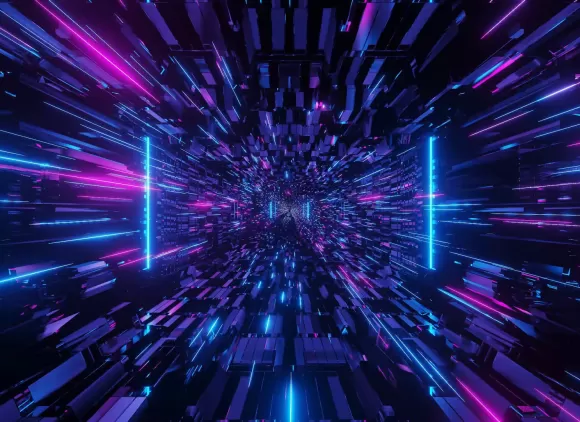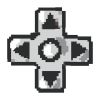Entrants should develop and design video games based on the core theme "Life in 2100."
What will innovations in science and technology bring in the year 2100?
Technology breakthroughs
From 1950 until today, the world has been transformed by the internet, smartphones, 3D printing and more. By 2100, innovations in artificial intelligence, quantum computing, manufacturing, biotechnology and more will reshape our daily lives in ways that are hard to predict.
Changes in the ways we work
Since 1950, common jobs like elevator operator have disappeared, and new jobs like software developer have appeared. With advances in AI, communications and manufacturing, the jobs in 2100 will probably be very different from the ones today.
Cleaner and cheaper energy
Instead of relying on oil and coal, which will eventually be used up, we're learning to use the sun, wind and hydrogen to make electricity. These new approaches are already cleaner than oil and coal and increasingly cheaper.
So what will we need to invent to support a growing population with massive shifts in what people do for a living? How will people travel in 2100? How will they communicate?
Wouldn't we be more likely to create a positive future for ourselves if more kids become scientists to help achieve breakthroughs in agriculture, telecommunications, the use of advanced materials, health care and environmental stewardship?
Video game entries should also incorporate one or more of NSF's focus areas in their design.
Novice video game designers
Recommended for younger kids grades K-6. Entrants can focus on creating games that address futuristic scientific themes.
Make a video game that addresses one of the following:
- A game where players use cool technology to protect Earth's ecosystems — such as the ocean, Arctic, rainforests, coral reefs, etc. — in 2100.
- A game where players discover and learn more about the universe and the cosmos. Players might learn about the many ways we examine the universe today and the things we could learn in the next 75 years.
- A game that imagines the world of work in 2100. For example, how will humans and machines work together to get more done?
- A game about how transportation will work in 2100.
- A game where you learn through experiments. Players could select an idea to test, design an experiment, run the experiment and evaluate the results.
- A game that teaches players about an NSF focus area.
Some examples of the types of games you can make (other non-violent types of game are fine too) include:
- Interactive story adventure: Players make choices that impact the game's outcome.
- Puzzle solving: Games that involve solving puzzles to progress through the story or achieve objectives.
- Educational quiz game: Players answer questions or solve problems related to the theme to progress through levels.
Advanced video game designers
Recommended for kids grades 7–12.
Make a video game that addresses one or more of NSF's focus areas in the context of life in 2100. Imagine the world in the year 2100, where technology and science have evolved beyond our current understanding.
In this world, you are a young innovator faced with a series of challenges that can shape the future of humanity. Your mission is to use your knowledge of STEM to solve these challenges and improve life on Earth.
Your game should highlight the potential of STEM in the year 2100 and could focus on one or more of the following:
- Creating sustainable ecosystems.
- Managing futuristic cities.
- Broadening participation in STEM.
- Advancing medical technology.
- Understanding the universe through observation.
- Integrating artificial intelligence into daily life.
- Developing new manufacturing technology.
- Learning through experiments.
- Harnessing the power of quantum computing.
These are examples of potential themes for your video game, but you are not limited to them. Feel free to explore other innovative STEM-related topics that align with the game design prompt.
Best-in-Class Awards
These awards acknowledge various aspects of game development:
- Best educational game.
- Best STEM discovery.
- Best technical skill.
- Best storytelling.
- Best art and design.
- Best K–6 game award.
Prize amount per entry: $5,000
Total prizes: 1 for each category
Merit Awards
These awards honor exceptional overall quality and innovation in video game development.
Prize amount per entry: $2,500
Total prizes: 20
Mentor Support Awards
These awards honor mentors, teachers or parents who aid teams in application and video game development.
Prize amount per entry: $1,000
Total prizes: 20
This award is only eligible for individuals/teams that win an award.
A mentor is an individual who provides guidance, support and encouragement, helping the team develop their skills, overcome challenges and achieve their goals. For example, a mentor might provide advice on programming, game mechanics and software tools or teach new skills or enhance existing ones related to video game development.
To be eligible for a Mentor Support Award, a mentor must demonstrate significant involvement in the development and success of their team's video game design project as defined in the competition's submission portal. For prize distribution fairness, if a mentor supports multiple successful teams, the mentor is only eligible for one Mentor Support Award. The mentor does not count towards the team size limit. This award is only eligible for individuals/teams that win an award.




